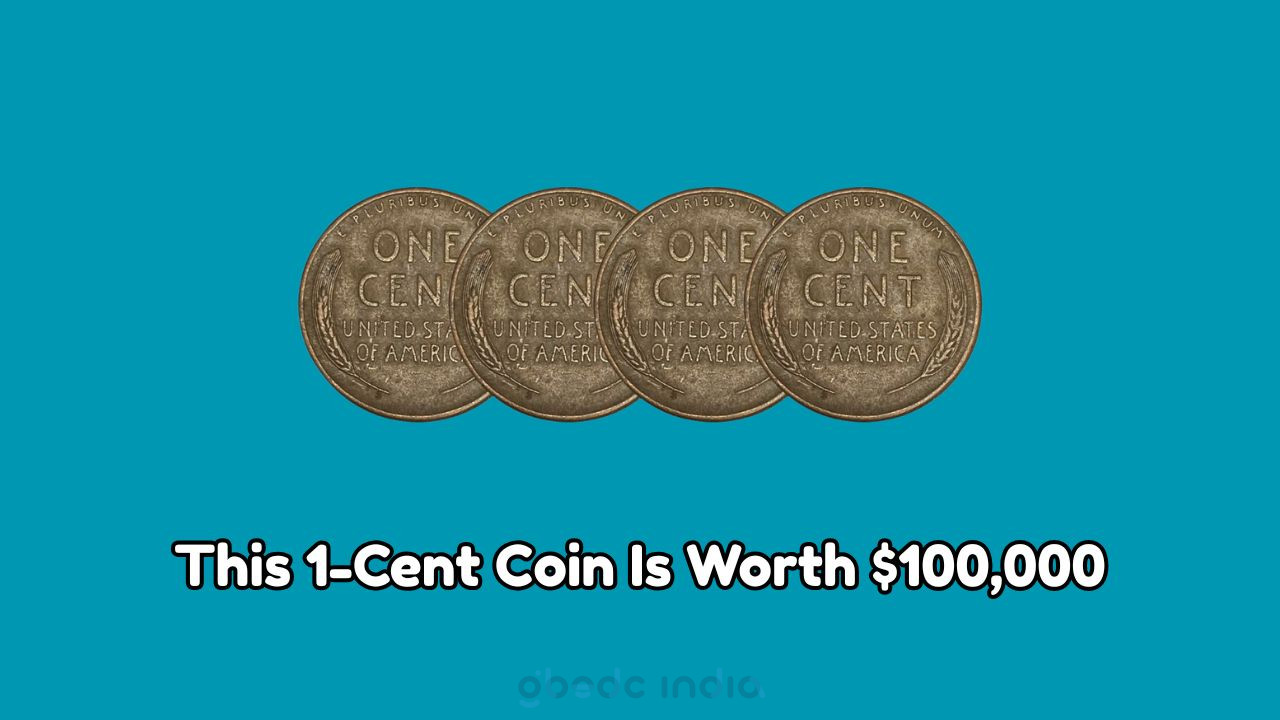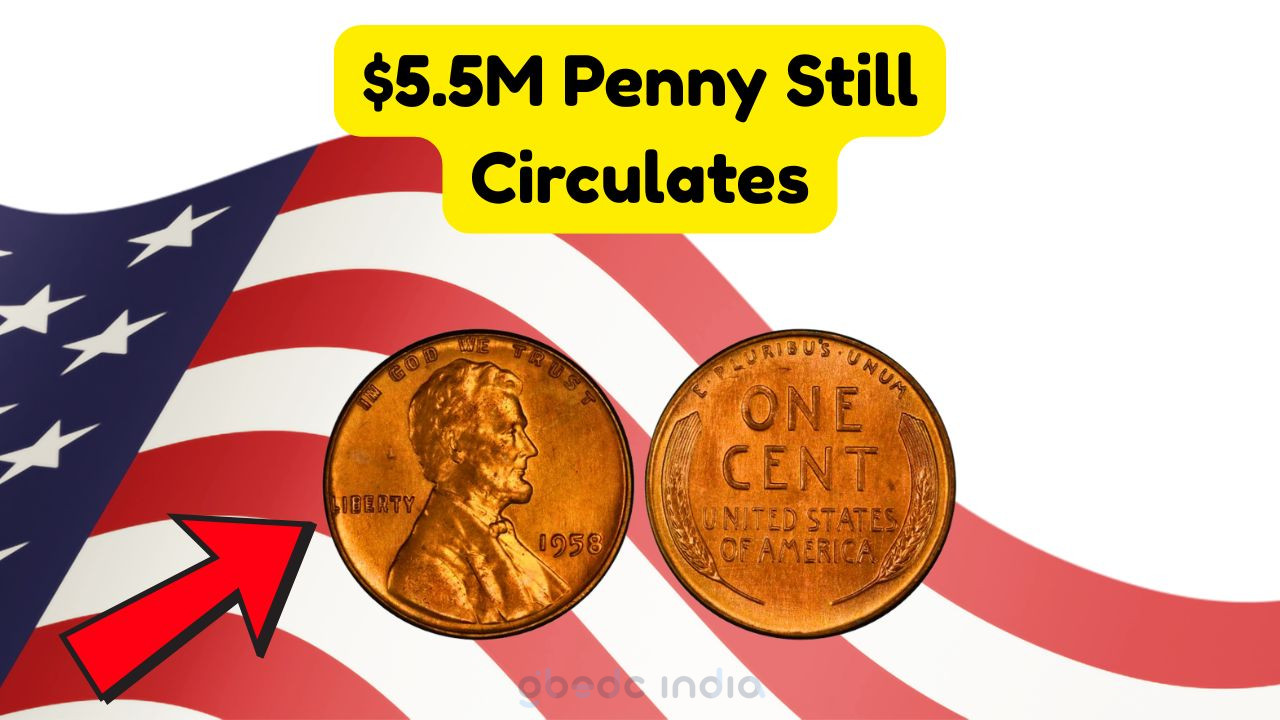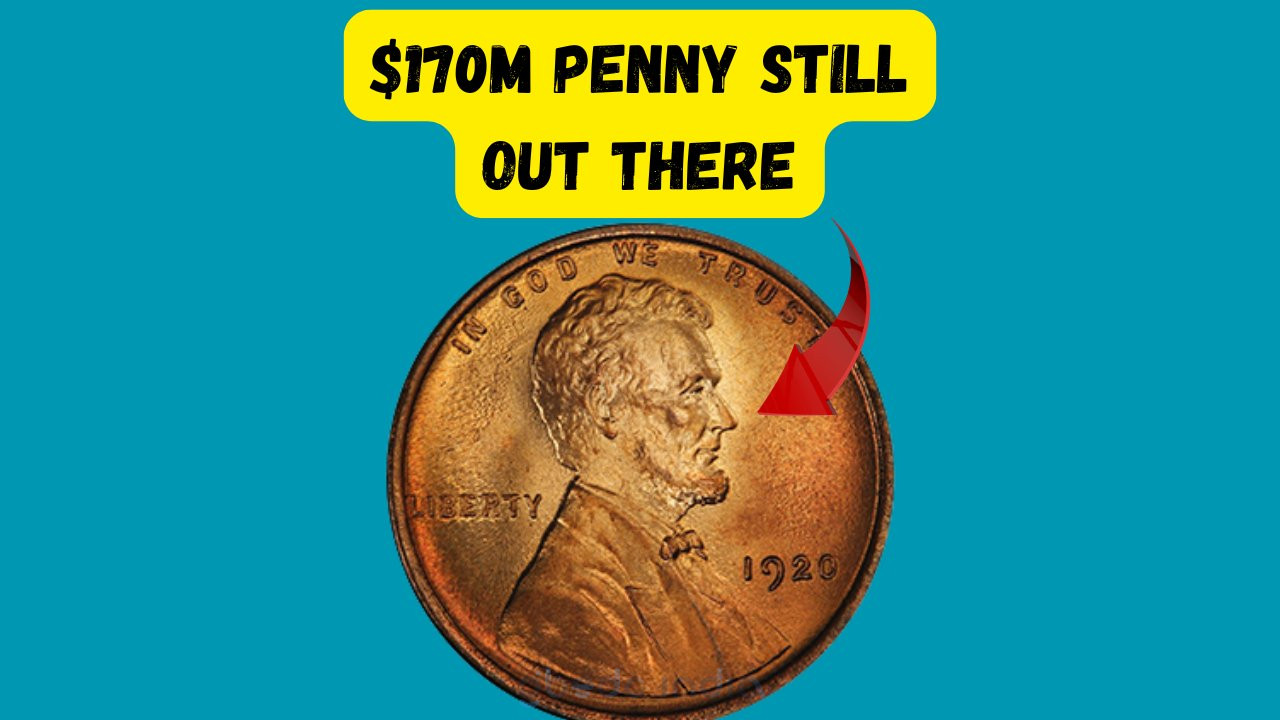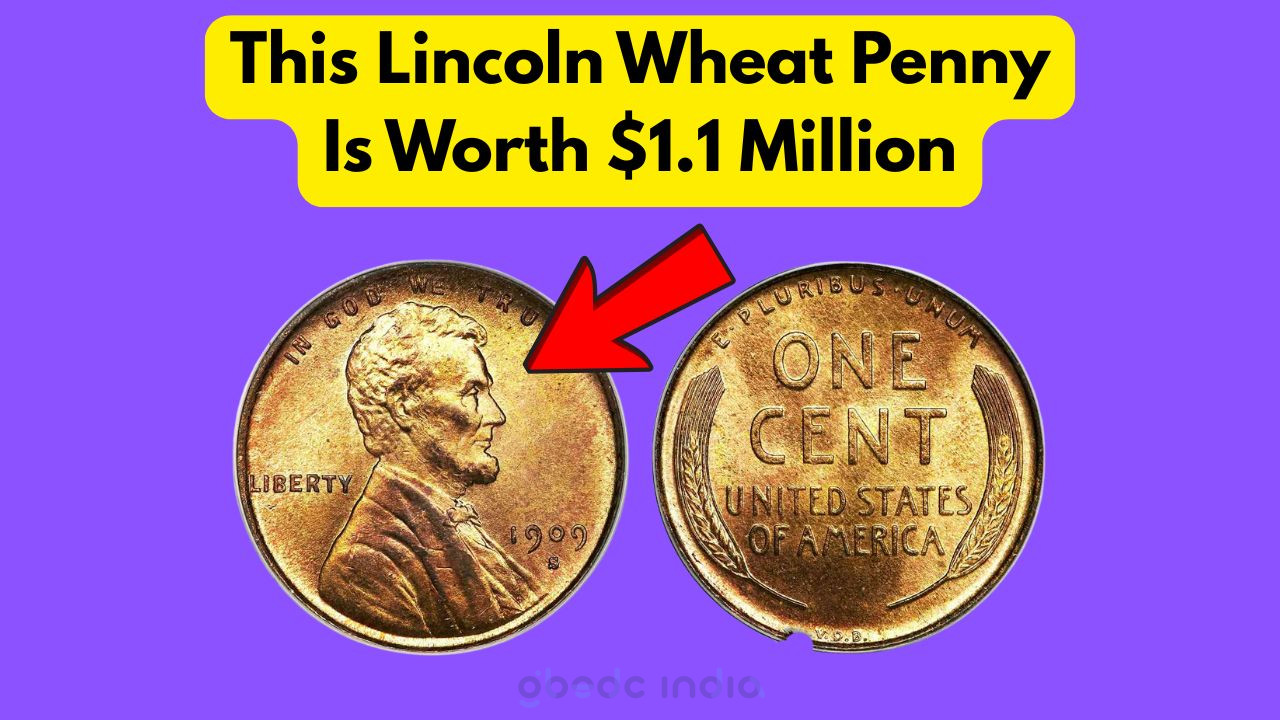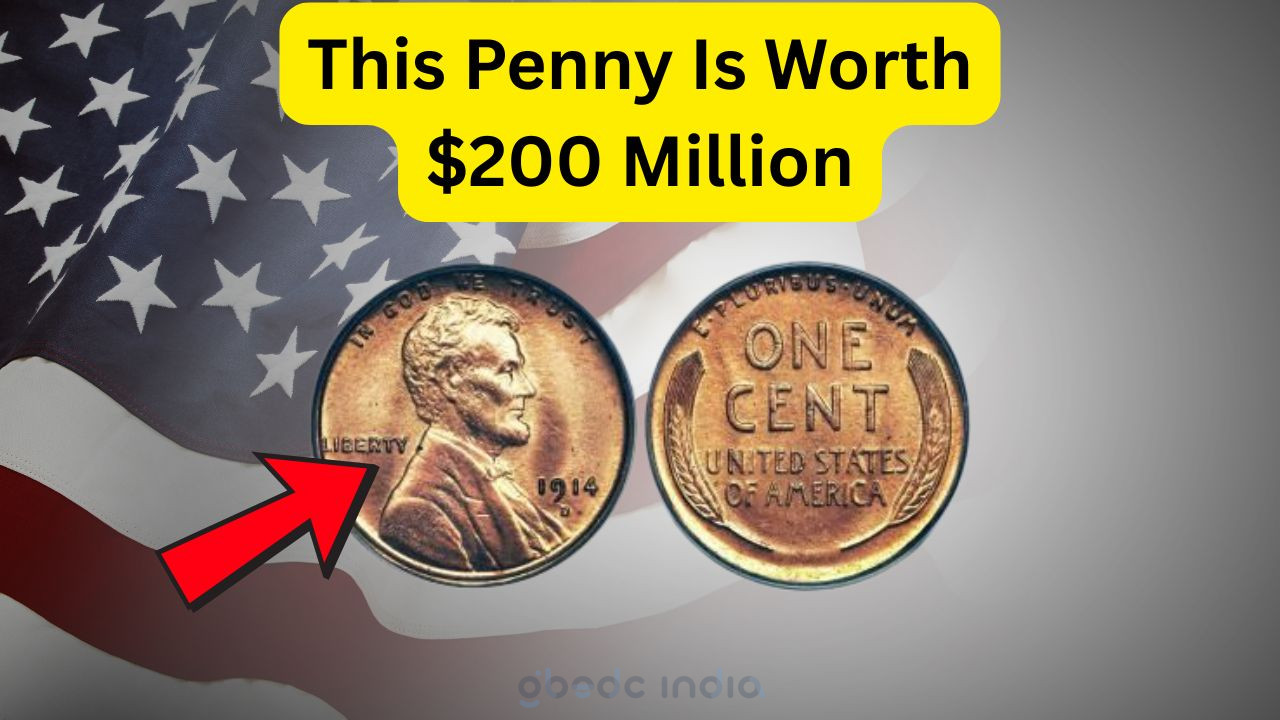Lincoln Wheat Penny Value: The fascination with the Lincoln Wheat Penny is more compelling than ever, particularly when you consider that a rare piece could be worth a staggering $100,000. In the world of numismatics, this penny is not just a humble coin but a potential treasure trove hiding in plain sight. Many people pass by these coins daily, unaware of their potential value. Understanding what makes these pennies so valuable can transform your approach to spare change, turning it into a potential goldmine.
Identifying Valuable Lincoln Wheat Pennies
Finding a valuable Lincoln Wheat Penny in your pocket change might seem like finding a needle in a haystack, but knowing what to look for can increase your chances significantly. These pennies, minted between 1909 and 1958, are known for their iconic design and, in rare cases, significant value. The most sought-after versions include those with minting errors or limited production runs. Some pennies, due to these anomalies, can fetch tens or even hundreds of thousands of dollars at auction.
- Key Dates: Pennies from certain years, such as 1909 (the first year of minting), are highly collectible, especially those with the “V.D.B.” initials on the reverse.
- Mint Marks: Coins minted in San Francisco (marked with an “S”) and Denver (“D”) can be more valuable, depending on the year and rarity of the mint run.
- Error Coins: Look for pennies with double dies, off-center strikes, or other minting errors.
- Condition: Coins in mint or near-mint condition are worth more than those that are heavily circulated.
Historical Context of the Lincoln Wheat Penny
The Lincoln Wheat Penny holds a significant place in American history. It was introduced to commemorate the centennial of Abraham Lincoln’s birth. Designed by Victor David Brenner, the coin was the first American coin to feature a real person’s likeness, rather than a symbolic figure. This was a revolutionary design choice at the time and marked a new era in American coinage. The original design included Brenner’s initials, “V.D.B.”, on the reverse, which was later removed due to public outcry over perceived excessive self-promotion.
- Design Changes: The penny’s design has undergone various changes, with the most notable being the transition from the Wheat reverse to the Lincoln Memorial reverse in 1959.
- Public Reaction: The inclusion of a real person’s likeness was initially met with controversy, but it soon became accepted and even celebrated.
- Collectibility: Over the decades, the Lincoln Wheat Penny has become a favorite among collectors due to its historical significance and design.
- Legacy: The penny remains a symbol of Lincoln’s enduring legacy and is a reminder of his impact on American history.
Current Market for Lincoln Wheat Pennies
The market for Lincoln Wheat Pennies is dynamic, with prices fluctuating based on rarity, demand, and condition. Collectors and investors are constantly on the lookout for these coins, often scouring auctions, estate sales, and online marketplaces. The demand for these coins is driven by their historical significance and the allure of owning a piece of American history.
| Year | Mint Mark | Condition | Rarity | Auction Price | Estimated Value | Notes | Photo |
|---|---|---|---|---|---|---|---|
| 1909 | S | Mint | High | $100,000 | $80,000 | V.D.B. Initials | |
| 1914 | D | Fine | Medium | $15,000 | $12,000 | Low Mintage | |
| 1922 | No D | Good | High | $30,000 | $25,000 | Mint Error | |
| 1943 | P | Uncirculated | Low | $10,000 | $7,500 | Steel Penny | |
| 1955 | D | Very Fine | Medium | $2,000 | $1,500 | Double Die | |
| 1958 | P | Mint | High | $1,000 | $800 | Last Year | |
| 1944 | S | Fine | Low | $500 | $400 | Common | |
| 1931 | P | Very Good | High | $5,000 | $4,000 | Limited Production |
Tips for Coin Collectors
For those interested in diving into the world of coin collecting, particularly Lincoln Wheat Pennies, there are several strategies to enhance your collection and increase its value. Understanding the nuances of grading, market trends, and preservation techniques can significantly impact your success as a numismatist.
- Grading Coins: Learn how to grade coins accurately to assess their market value effectively.
- Storage Solutions: Invest in quality coin holders and albums to protect your coins from damage.
- Market Research: Stay informed about market trends and historical price data to make educated purchasing decisions.
- Networking: Build relationships with other collectors and dealers to gain insights and opportunities in the coin market.
- Authentication: Ensure your valuable coins are authenticated by reputable services to avoid counterfeit risks.
Investment Potential
Investing in Lincoln Wheat Pennies can be a lucrative venture, but like any investment, it requires careful consideration and strategy. The potential for high returns makes these coins an attractive option for both novice and seasoned investors.
| Investment Type | Risk Level | Potential Return | Time Horizon |
|---|---|---|---|
| Rare Coins | High | High | Long-term |
| Common Coins | Low | Low | Short-term |
| Mint Errors | Medium | Medium | Medium-term |
| Gold Coins | High | High | Long-term |
| Modern Issues | Low | Low | Short-term |
| Commemorative Coins | Medium | Medium | Medium-term |
| Silver Coins | Medium | Medium | Medium-term |
Preservation Techniques
- Handling: Always handle coins by the edges to prevent fingerprints and oils from affecting their surfaces.
- Environment: Store coins in a cool, dry place to prevent corrosion and tarnish.
- Cleaning: Avoid cleaning coins with harsh chemicals that can damage their finish.
- Packaging: Use acid-free materials for packaging to prevent chemical reactions.
Recognizing Counterfeits
- Examine weight and dimensions carefully to detect anomalies.
- Compare details with authentic coins to spot discrepancies.
- Utilize professional grading services to confirm authenticity.
Understanding Coin Grading
Grading plays a crucial role in determining a coin’s value. A well-graded coin can fetch a significantly higher price than one that is poorly graded. Understanding the grading scale and the factors that influence a coin’s grade can help collectors make informed decisions.
- Grade Scale: Familiarize yourself with the Sheldon Scale, which ranges from Poor (P-1) to Perfect Mint State (MS-70).
- Visual Inspection: Look for wear, lustre, and strike quality when assessing a coin’s grade.
- Professional Grading: Consider having valuable coins graded by a professional service for accurate assessment.
Resources and References
- Utilize online databases and coin collector forums for research and advice.
- Attend coin shows and auctions to gain firsthand experience and knowledge.
- Subscribe to numismatic magazines and newsletters for the latest trends and insights.
Building Your Collection
Building a collection of Lincoln Wheat Pennies can be a rewarding hobby, blending history with the thrill of treasure hunting. Whether you’re a novice collector or a seasoned numismatist, focusing on key dates, mint marks, and condition will maximize your collection’s value.
- Set Goals: Determine whether you’re collecting for investment, historical interest, or personal enjoyment.
- Focus Areas: Decide if you will concentrate on specific years, mint marks, or error coins.
- Budget: Establish a budget to guide your purchases and avoid overspending.
Frequently Asked Questions
What makes the Lincoln Wheat Penny so valuable?
Lincoln Wheat Pennies can be valuable due to their historical significance, rarity, mint errors, and condition.
How can I determine if I have a rare Lincoln Wheat Penny?
Check for key dates, mint marks, and errors. Consider professional appraisal for accurate valuation.
Where can I sell my rare Lincoln Wheat Penny?
You can sell rare coins through auctions, coin dealers, or online marketplaces specializing in numismatics.
Are all Lincoln Wheat Pennies valuable?
Not all are valuable; only certain years, mint marks, and error coins have significant value.
How should I store my Lincoln Wheat Pennies?
Store them in a cool, dry place using coin holders or albums to preserve their condition.
